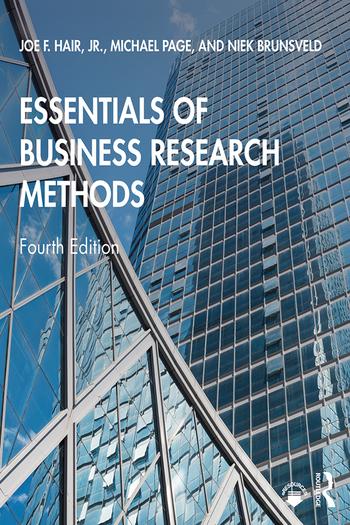Question
Founded in 1897, San Pedro College (SPC) is a comprehensive teaching institution with 13,200 undergraduate and 3,000 graduate students, and 340 FTE faculty and staff.
Founded in 1897, San Pedro College (SPC) is a comprehensive teaching institution with 13,200 undergraduate and 3,000 graduate students, and 340 FTE faculty and staff. SPC is located in a scenic and relatively isolated setting in Mission Ridge, CA. Like many other institutions, SPC has confronted multiple challenges in recent years. Despite annual tuition increases, resources for new initiatives have been limited, and there have been few resources available for capital improvements, or the initiation of new programs or services. Other than 1.5% acrosstheboard faculty and staff salary costofliving and standard promotion adjustments, there have been no significant faculty or staff raises in several years. The hope voiced by many within the institution, that "this too will pass," seems unrealistic. Discussions in the media and on campus indicate that the institution's financial challenges are likely to continue into the future. Increasingly, one hears comments on campus expressing concern that there seems to be no clear plan to address the realities the institution faces. Underscoring this sentiment was the following headline of a faculty editorial in the campusnewspaper: "Hope Is Not a Strategy." The college's pressures are apparent in many spheres of institutional functioning. One area of particular concern is faculty and staff morale. Much of the conversation about morale problems seem to center on compensation. A Faculty Distinction Program (FDP) and the Staff Performance Excellence Program (SPEP), initiated in 2002 and 2003 respectively, were designed to recognize and motivate outstanding performance, but neither program has been funded since 2006. The performance documentation and employeesupervisor discussion component of the SPEP, which once played a central role in determining eligibility and levels of meritbased salary increases, has been continued, but it is essentially an academic exercise. It is not tied in any way to compensation, and it is not taken all that seriously by most staff. The Faculty Distinction Program has been deferred for the past two years. While the compensation situation is the most frequent topic in discussions of morale, it may well be but one aspect of the problem. Other less obvious factors related to morale have not been addressed. The lack of meaningful communication regarding the compensation situation other than official emails informing faculty and staff of policy decisions relative to their deferral could well be part of the problem. Noticeably absent have been efforts to improve communication and create a shared sense of the challenges the institution faces, recognition of the dedication of faculty and staff in the face of difficult times, celebration of the numerous innovations and efficiency measures faculty and staff have initiated, and information about institutional plans and strategies for addressing these challenges in the longer term. Some Priorities for Consultant ConsiderationA number of the most motivated and talented faculty and staff are exploring alternative employment opportunities. These actions and the conversations that precede and follow them contribute further to a negative campus climate and a contagious downward spiral in confidence. A good deal of time is spent in "water cooler" and lunch discussions of the depressing future that many envision for SPC. All these dynamics combine to have an adverseeffect on the institutional drive, personal initiative, and productivity. President Jamison and Provost Iberia ask you to propose some options for dealing with the staff productivity, initiative, and morale problems, which all parties see as beginning to seriously undermine the core mission of SPC and the quality of the institution's programs and services.No constraints have been placed on you in your thinking, other than the stipulation that there is little or no money available for raises. 1 Executive Summary - serving to state your thesis and preview the problem/solution areas. 2 Introduction - this can sometimes be referred to as "front matter" including an introduction stating your intention to evaluate the problems or issues and provide recommendations for solutions along with an overview of the organization including any background information. 3 Body - which should include the followingmain sections and can also include various subsections: Problems or Issues identified -for example, areas including but not limited to: Culture/Morale, Production, Communication, and Leadership (Mission/Vision/Values) Solutions to Issues identified -for example, areas including but not limited to:Culture/Morale, Production, Communication, and Leadership (Mission/Vision/Values) Recommendations for SPECIFIC Organizational Assessment/s -addressing areas including but not limited to: Culture/Morale, Production, Communication, and Leadership (Mission/Vision/Values) (please use examples from our class activity) Plan for Implementation and/or Recommended Institutional Changes - in areas including but not limited to: Culture/Morale, Production, Communication, and Leadership (Mission/Vision/Values) for improving the present situation.Of note: As stated, these areas are suggested,at a minimum, to be included in the body of your analysis as part of your evaluation since they are identified in the case narrative. However, you should find additional areas you wish to address as part of your thorough evaluation of any underlying issues. Conclusionand Final Overall Recommendations - summary/review, sometimes referred to as your "back matter, " is usually an abbreviated re-statement or reiteration of your Executive Summary along with a final brief restatement of your Recommendations. This allows you to close persuasively in order to "sell" your strategy for implementing change.
Step by Step Solution
There are 3 Steps involved in it
Step: 1

Get Instant Access to Expert-Tailored Solutions
See step-by-step solutions with expert insights and AI powered tools for academic success
Step: 2

Step: 3

Ace Your Homework with AI
Get the answers you need in no time with our AI-driven, step-by-step assistance
Get Started


